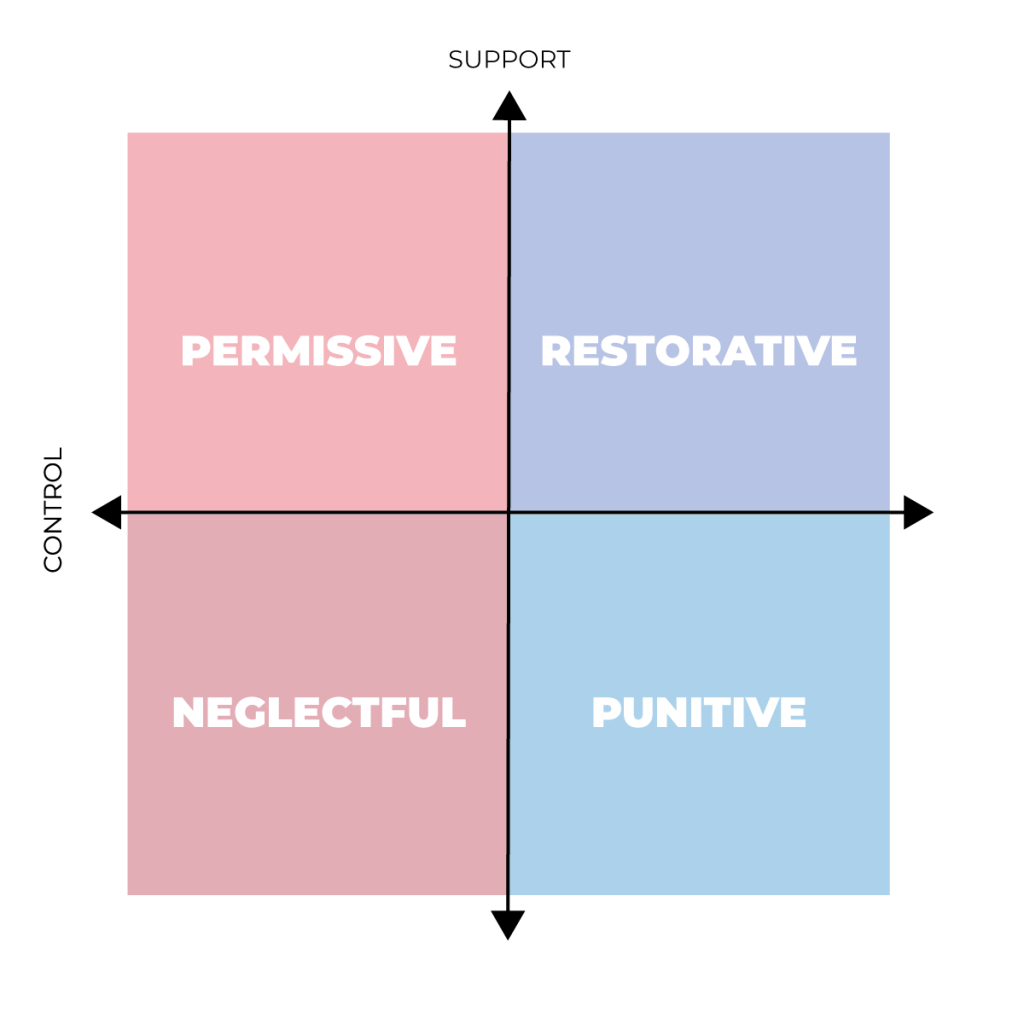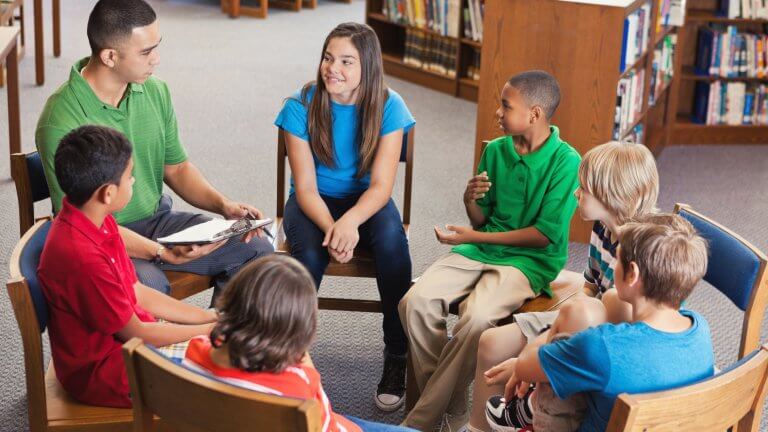You’ve likely heard the term “restorative discipline” or “restorative justice” used on your campus before. It’s a philosophy that’s been getting a lot of attention lately in the education world. But, despite the term’s growing popularity, you might not know what restorative discipline really is.
Restorative discipline is just one branch of the larger restorative practices tree. The international Institute of Restorative Practices defines restorative practices as, “social science that studies how to build social capital and achieve social discipline through participatory learning and decision-making.” You might be confused by this definition, but it simply means that restorative practices focus on repairing social harm by involving the community.
In a discipline setting, restorative discipline is a way of dealing with bad behavior without only punishing offenders. Traditional modes of discipline focus on punishing bad behavior or offenders. Restorative discipline flips that script, focusing on repairing the harm done to people. It works almost like a mediation or reconciliation strategy. In fact, restorative discipline has rich ties to ancient and indigenous peoples across the globe who have used similar methods to achieve just that.
Why is Restorative Discipline So Powerful?
When done right, restorative discipline is a powerful campus tool. Unlike your traditional models of behavior management, restorative discipline has a high level of control and support. A great way to visualize this is by looking at a social discipline window chart:
This chart breaks down behavior management into four categories based on low amounts of control / support and high amounts of control / support.

- Punitive (Authoritarian) – You have high levels of control, but offer low levels of support.
- Restorative (Authoritative) – You have high levels of control and high levels of support.
- Neglectful (Irresponsible) – You have low levels of control and low levels of support.
- Permissive (Paternalistic) – You have low levels of control but high levels of support.
The only philosophy or method of behavior management that has both high levels of support and of control is restorative. Why? Because restorative discipline works with multiple parties, supporting them within a controlled environment or framework.
What is the Basic Process of Restorative Discipline?
You likely already use conferences, groups, circles, and more to handle behavior issues. However, for something to be truly restorative it has to involve all three primary stakeholders in repairing the harm done by an action.
The three primary stakeholders are:
- The Victim(s): this is the person, or persons, who have had harm done to them.
- The Offender(s) this is the person, or persons, who committed the harm.
- Communities of care: these are the people surrounding both the victim and the offender. These could be family members, support groups, friends, etc.
It’s important that you represent all of your stakeholders in the process too, because actions don’t exist in a vacuum. Interactions between two people can have larger effects on victims, offenders, and their communities. Each person gets a chance to have his or her voice heard and develop a repair plan that fits the community’s unique needs. Additionally, by working together, your focus is on building or restoring relationships and repairing harm done.
Restorative practices exists across a continuum. There’s a range of ways you can implement restorative discipline, depending on the severity of the action. You can use smaller impromptu conferences for less formal interactions, or restorative circles / conferences for more formal interactions. As you go right on the continuum towards more formal interactions, you’ll involve more and more people in your procedure. That’s why it’s important to understand the process for facilitating restorative discipline circles.
It’s also important to note that you don’t have to use restorative discipline as a reactive process. In fact, it’s more beneficial as a whole to use the processes of restorative discipline in both proactive and reactive ways.
Ultimately, restorative discipline is a strong community-centered philosophy for your schools. It focuses on repairing relationships and reversing harm rather than punishing offenders.
Learn more about restorative practices through our online peer mediator training!
Angela has 24 years of experience in education. She has been in her current position for 12 years. Angela has trained and provided coaching support to over 200 campuses for PBIS. She is also a certified Restorative Practices coordinator. She is a trainer for Interventions, Coaching Classroom Management, CHAMPS, and Why Try.






[…] of those methods has been “restorative discipline,” which seeks to involve community members in helping change student behavior and repairing harm […]